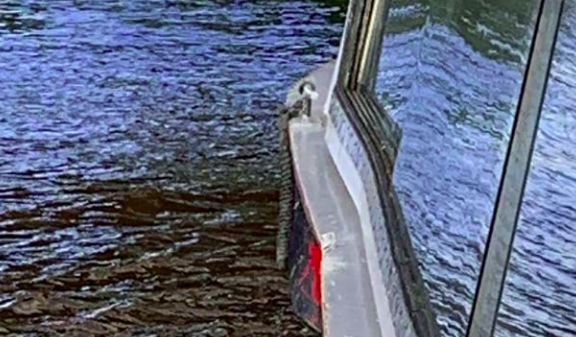In its latest Safety Digest, UK MAIB analyzes a passenger vessel’s heavy contact with a bridge, which was attributed to strong breeze and peak flow of the river, despite the Captain was familiar with the route.
The incident
An inshore passenger vessel was undertaking a tourist trip along a river running through the centre of a historic city. There were three crew and 42 passengers onboard, including families with small children. The vessel’s passenger carrying capacity was significantly reduced due to social distancing measures required during the COVID-19 pandemic. It was a sunny day but there was a strong breeze and peak flow of the ebb tide in the river.
[smlsubform prepend=”GET THE SAFETY4SEA IN YOUR INBOX!” showname=false emailtxt=”” emailholder=”Enter your email address” showsubmit=true submittxt=”Submit” jsthanks=false thankyou=”Thank you for subscribing to our mailing list”]
Having departed the pier, the master headed upstream and into wind passing under bridges and along the riverbank as the passengers enjoyed the trip. The master followed the usual route to a point in the river where the vessel was turned around just upstream of a bridge, for the return trip downstream back to the pier.
As the vessel’s heading was being reversed close to the bridge, it was swept sideways towards one of the bridge’s pillars by the combined effect of the strong stream and wind. The vessel’s port side made heavy contact with the bridge, resulting in a dent in the fendering.
As a result, some passengers fell over and glasses were damaged in an internal bar area, however, there was no injury.
Lessons learned
- Irrespective of a vessel’s size or purpose, every journey, however repetitive, needs a passage plan. In this case, the strong breeze and peak flow of the river made for very difficult conditions for manoeuvring the passenger vessel close to the bridge. The master was familiar with the area and conditions, so the additional risks could probably have been recognized and avoided. Since the incident, the vessel’s operator has issued guidance to its ferry masters to turn around downstream of the bridge during peak river flow or windy conditions.
- There were a small number of passengers on board compared to the vessel’s normal maximum capacity; this meant the risk of passenger injury was also reduced. If there is any risk to passengers, the public address system should be used to make sure everyone is sitting down or holding on prior to an impact of this nature.






























































